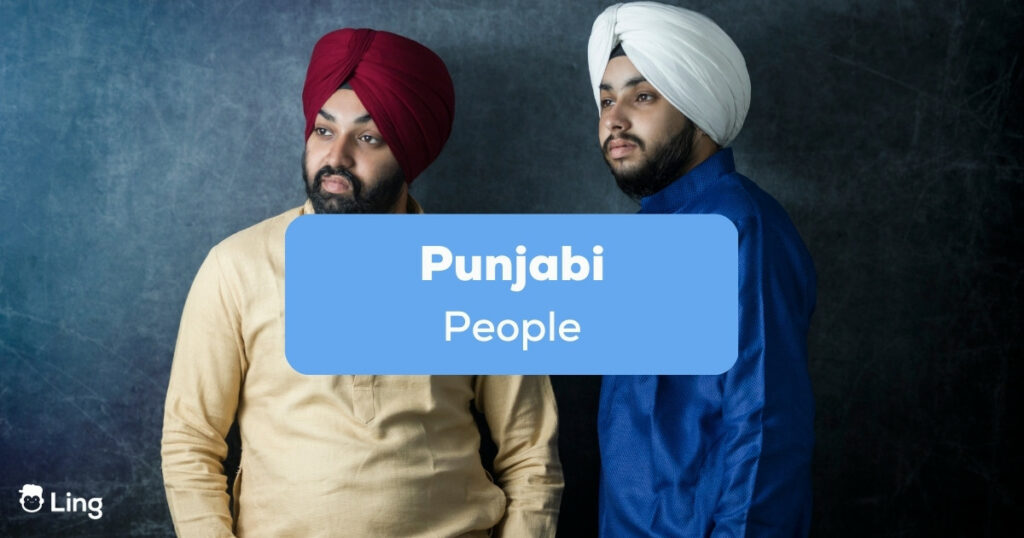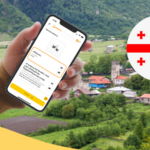Interested in getting to know the Punjabi people? This vibrant and dynamic community in northern India and eastern Pakistan is steeped in rich history and genuinely one-of-a-kind traditions, which is why many people are interested in getting to know them better.
Since you landed in this post, you may have come across some Punjabi cuisine, music, or even language without realizing it. But who are the Punjabi people, and where do they come from? Let’s discover what makes this incredible ethnic group genuinely unforgettable!
The Origins Of The Punjabi People
So, do you want to know about the history of the Punjabi people? Well, they’ve got a pretty rich and diverse past! The Punjabis are descendants of the ancient Indus Valley Civilization – one of the world’s earliest urban civilizations. Over time, they’ve been influenced by various cultures, like Persian, Greek, Turkic, and Mongol. Talk about some serious cultural fusion!
The Sikh Empire
One of the most critical periods in Punjabi history was the establishment of the Sikh Empire in the early 18th century. The leader of the empire, Ranjit Singh, created a powerful and prosperous kingdom that spread across northern India. Despite its military and economic might, the Sikh Empire was known for its tolerance and religious diversity. That’s pretty impressive!
British Raj
The British Raj period, which lasted from 1858 to 1947, had a massive impact on Punjabi society and culture. During this time, the British introduced new laws, customs, and institutions that greatly influenced Punjabi society. Also, many Punjabi people emigrated to other parts of the world, like Southeast Asia and East Africa, as part of the British colonial empire.
Partition Of India And Pakistan
In 1947, the separation of India and Pakistan significantly impacted Punjabi society. A lot of Punjabi people had to migrate between India and Pakistan, and many lost their homes, families, and livelihoods. Despite their challenges, the Punjabi people have continued to hold onto their cultural heritage and identity.
Punjabis Today
Today, Punjabis can be found worldwide and still significantly contribute to society and culture. They’re known for their tight-knit communities, love for food, music, dance, and dedication to preserving their cultural heritage. It’s incredible to see how resilient and proud they are of their roots, even after all these years!
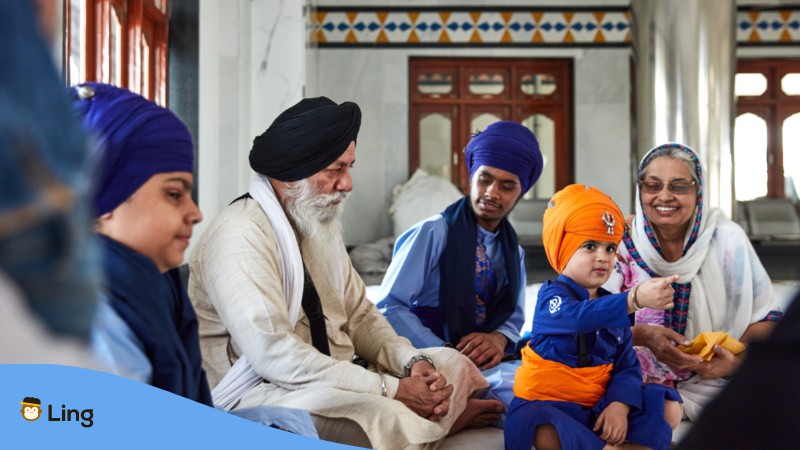
The Punjabi People
You may be surprised to learn that they are one of the largest ethnic groups in South Asia, with over 100 million people! But what exactly makes them unique, and what is the definition of a Punjabi person? Well, let me tell you! The Punjabi people are an ethnic group that calls the Punjab region, located in northern India and eastern Pakistan, their home. Want to learn more about their traits? We got you!
Welcoming Hospitality
A typical example of Punjabi hospitality is in their homes, where they often go out of their way to make guests feel comfortable, offering them food and drinks and ensuring that they are well taken care of.
Passionate About Food
Punjabis are passionate about their food, and it’s common for them to spend hours preparing traditional dishes like tandoori chicken, butter chicken, makki di roti, and sarson da saag. They also love experimenting with spices and ingredients like tandoori masala to create new and delicious dishes.
Energetic With Joyful Spirit
Punjabi people are known to be energetic and lively, and this is evident in their traditional Bhangra dance. Bhangra is a high-energy dance performed to the beat of the dhol drum and is a staple of Punjabi weddings and festivals.
Family-Oriented
Punjabi families are close-knit and place great importance on family values. It’s common for multiple generations to live together in the same household, and families often make decisions together.
Spiritually Devoted
Punjabi people have a rich spiritual heritage and follow their religious beliefs with great devotion. For example, many Punjabi people visit gurdwara (Sikh temples) regularly to participate in religious ceremonies and to seek spiritual guidance.
Loves Celebrations
Punjabi people love to celebrate the Punjabi holidays with great joy and enthusiasm. For example, the Baisakhi (Spring festival) is a great celebration in Punjab. Religious ceremonies, traditional dances, and feasts characterize it.

Places Where Most Punjabi People Reside
How interesting is it that the region of the Punjabi people spans 270,000 square kilometers covering parts of both India and Pakistan? The Punjabi people are indeed one of the largest ethnic groups in South Asia!
Location In India
In India, most Punjabis can be found in the state of Punjab, located in the northwest and known for its fertile land and agricultural production. But you can also find Punjabi communities in other parts of India, like Delhi, Haryana, and Rajasthan.
Location In Pakistan
In Pakistan, the Punjab province is located in the eastern part of the country. It is the most populous province, with Lahore as its capital city. Punjabi people reside in other territories of Pakistan, including Islamabad, Karachi, and Rawalpindi.
Punjabi Diaspora
The Punjabi diaspora can also be found in other parts of the world, including the United Kingdom, Canada, the United States, and Australia. Punjabi people have established strong communities in these countries and continue celebrating their cultural heritage through food, music, and religious practices.
Just a heads up, the places where Punjabi people live can vary, so the areas listed above might not be the only ones. But indeed, those areas are known for having significant Punjabi communities, so it’s a safe bet that you’ll find lots of Punjabis there!
The Punjabi Communities
Now, let’s look into the heart of Punjabi society. This community is an eclectic mix of different ethnic and religious groups. Still, despite their differences, they all share a deep-rooted sense of community and a fierce pride in their cultural heritage.
Punjabi Sikhs
- These members of the Punjabi community follow Sikhism and are famous for their strong beliefs in social justice and equality.
- They can be easily recognized by their turban and beard.
- They have made significant contributions in several fields, such as music, dance, cuisine, and religious/spiritual domains.
- Punjabi Sikhs value education and actively engage in community service, with many participating in charitable organizations.
Punjabi Hindus
- Although a smaller portion of the Punjabi community, they play a crucial role in keeping the traditional Punjabi culture alive.
- They are known for their love of festivals and devotion to Hindu gods.
- They bring a unique and lively energy to Punjabi society through celebrations like Diwali and Holi.
- Family, education, and hard work are highly valued by Punjabi Hindus.
Punjabi Muslims
- They make up a considerable part of the Punjabi community and follow Islam.
- They have made substantial contributions to Punjabi society, especially in literature, music, and cuisine.
- Punjabi Muslims have a strong sense of community and respect for their elders.
- They value education and have a significant presence in business and trade.
- They observe important Islamic holidays like Eid al-Fitr and Eid al-Adha and follow strict dietary laws.
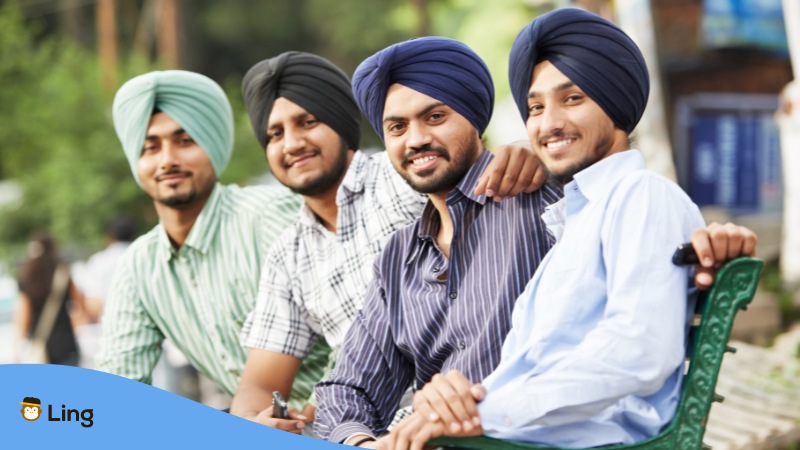
The Indian Punjab And The Pakistani Punjab
The Indian and Pakistani Punjabs are regions with unique histories, cultures, and social structures. While they share a common past, they have developed distinct differences in recent decades.
Economy
The Indian Punjabis have a more developed and diverse economy, with a thriving agricultural sector and a growing industrial base. On the other hand, Pakistani Punjab has a more agricultural-focused economy with a lower level of industrial development.
Political Structure
The Indian Punjab has a more democratic political system, with a state government that operates within the framework of the Indian constitution. Meanwhile, the Pakistani Punjab operates within a federal parliamentary system and has a more centralized government structure.
Demographics
Both Punjabs have a large Punjabi-speaking population, but the demographics of the two regions have shifted in recent decades due to migration, conflict, and other factors.
Cultural Traditions
Indian and Pakistani Punjabis have rich cultural traditions, including music, dance, cuisine, and festivals. However, there are distinct differences between the two regions regarding the forms of these traditions and their religious beliefs.
For example, In India, Bhangra is a popular form of Punjabi folk dance. In contrast, in Pakistan, the traditional form of Punjabi music is called “Sufi,” which is a blend of Sufi poetry and devotional music.
Useful Punjabi Vocabulary
As you explore the rich and diverse region of Punjab, it’s always a good idea to know some useful vocabulary to help you communicate and connect with the local people.
| English | Punjabi | Gurmukhi Script |
| Hello | Sat Sri Akal | ਸਤਿ ਸ੍ਰੀ ਅਕਾਲ |
| Thank you | Dhannvaad | ਧੰਨਵਾਦ |
| Yes | Haan | ਹਾਂ |
| No | Nahi | ਨਹੀਂ |
| Food | Khaana | ਖਾਣਾ |
| Water | Peena | ਪੀਣਾ |
| Money | Paisa | ਪੈਸਾ |
| How are you? | Tusiin Kihde Ho? | ਤੁਸੀਂ ਕਿਹੜੇ ਹੋ? |
| My name is… | Mera Naam … Hai | ਮੇਰਾ ਨਾਮ … ਹੈ |
| Where is… | … Kahunda Hai | … ਕਹੁੰਦਾ ਹੈ |
Conversational Punjabi Phrases
Looking to strike up a conversation? Having a few handy words and phrases in your back pocket can make a big difference. Here are some conversational phrases that will come in handy when you’re in Punjabi-speaking areas:
| English | Punjabi | Gurmukhi Script |
| I’m fine | Main theek haan | ਮੈਂ ਠੀਕ ਹਾਂ |
| Where are you from? | Tuhada kaun wich rehnda hai? | ਤੁਹਾਡਾ ਕਿਹੜੇ ਵਿੱਚ ਰਹਿੰਦਾ ਹੈ? |
| I’m from… | Main… | ਮੈਂ… |
| Can you speak English? | Tusi Angrezi bol sakde ho? | ਤੁਸੀ ਅੰਗਰੇਜ਼ੀ ਬੋਲ ਸਕਦੇ ਹੋ? |
| What’s your name? | Tusaana naam kihra hai? | ਤੁਸਾਨਾ ਨਾਮ ਕਿਹੜਾ ਹੈ? |
| Where are you from? | Tusi kihde to ho? | ਤੁਸੀਂ ਕਿਹੜੇ ਤੋਂ ਹੋ? |
| Nice to meet you | Tusaano naal milan diti tajgi | ਤੁਸਾਨੋਂ ਨਾਲ ਮਿਲਨ ਦਿੱਤੀ ਤਾਜਗੀ |
| Can you help me? | Tusi mainu madad kar skde ho? | ਤੁਸੀਂ ਮੈਨੂੰ ਮਦਦ ਕਰ ਸਕਦੇ ਹੋ? |
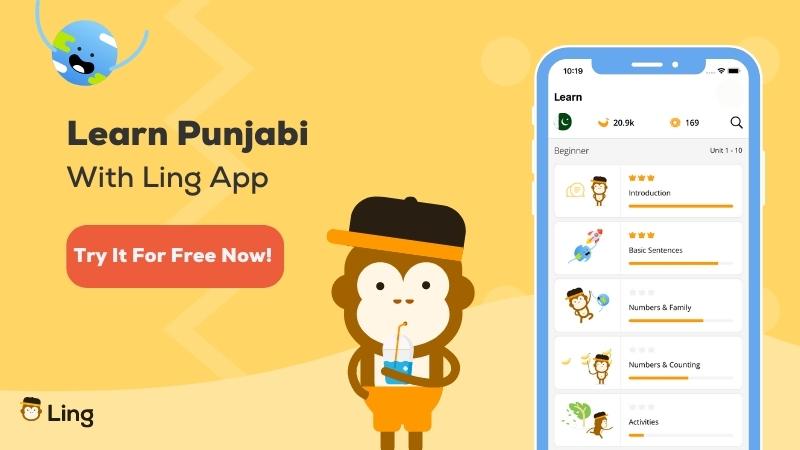
Learn The Punjabi Language With The Ling App
Exploring the Punjabi region’s rich culture is easier and more enjoyable when you know some helpful vocabulary and phrases. Learning the language opens doors to new experiences and helps you connect with the Punjabi people on a deeper level!
But have you considered using the Ling app to fast-track your language-learning process? With its interactive features, in-depth lessons, and chatbot, you can learn a new language within 10 minutes of using the app daily. So, why not give Ling a try? Download from the Google Play or App Store now!
